Here is another image post for you all to enjoy, today’s topic is the Greek temples!
Greek temples (naos – meaning dwelling place in reference to the belief that the god dwelt in that place, or at least temporarily visited during rituals) were places of formal worship. Each Greek community had its own sacred sites and temples which were looked after by priests.
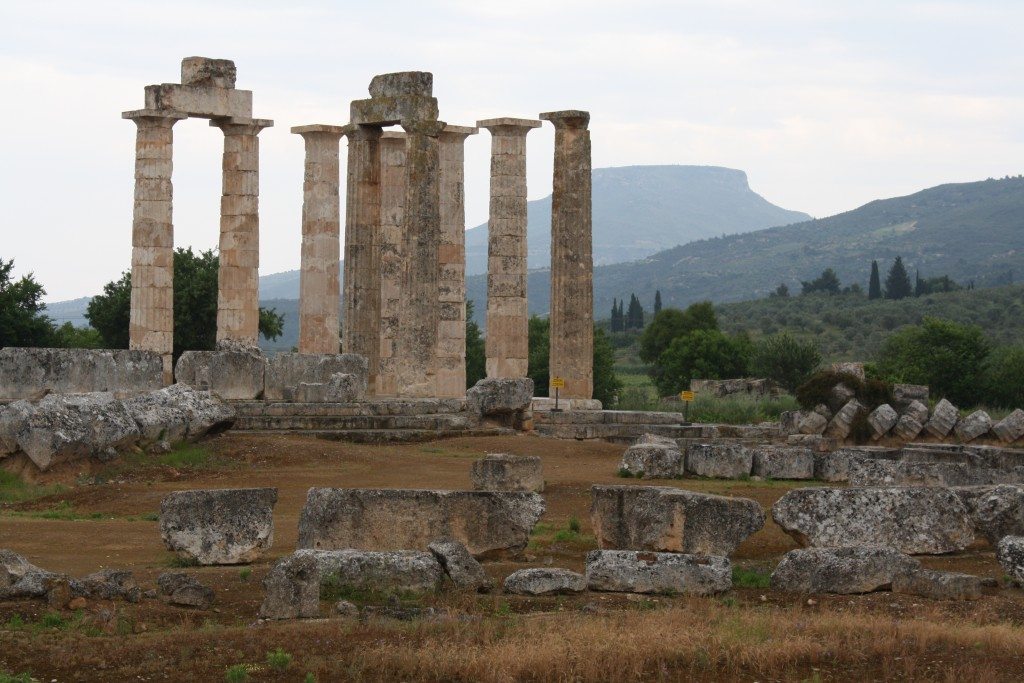
The temple of Zeus at Nemea was constructed in c. 330 BCE and replaced an earlier temple which had stood from the 6th to 5th century BCE. Inside was a cult statue of the god. The temple was composed of an exterior Doric peristyle (6×12 unusually tall and slim columns) with an interior Corinthian colonnade, topped by a second story of the Ionic order. There were no sculpted decorations on the exterior. It is regarded as the last of the great Doric temples of the Classical tradition. The temple measures a little over 20×42 m, the material used is locally quarried limestone. Three of the now standing columns have stood since original construction (slightly darker colour), the others have been repositioned in the early 2000’s CE using the original, fallen drums. Photo © Mark Cartwright.
Sacred sites and temples were set up for the large amount and variety of gods worshipped in ancient Greece. The most important, though, were the Olympian gods led by Zeus. These were Athena, Apollo, Poseidon, Hermes, Hera, Aphrodite, Demeter, Ares, Artemis, Hades, Hephaistos, and Dionysos. These gods were believed to reside on Mt. Olympos and would have been recognised across Greece.

The 5th century BCE Erechtheion, the Acropolis, Athens. Photo © Mark Cartwright.
Greek temple architecture was well known in ancient times and has become rather famous today. Temples followed a similar plan and were almost all rectangular with a single row of columns lining their exterior sides. The two most popular styles of columns were the Doric and Ionic orders.
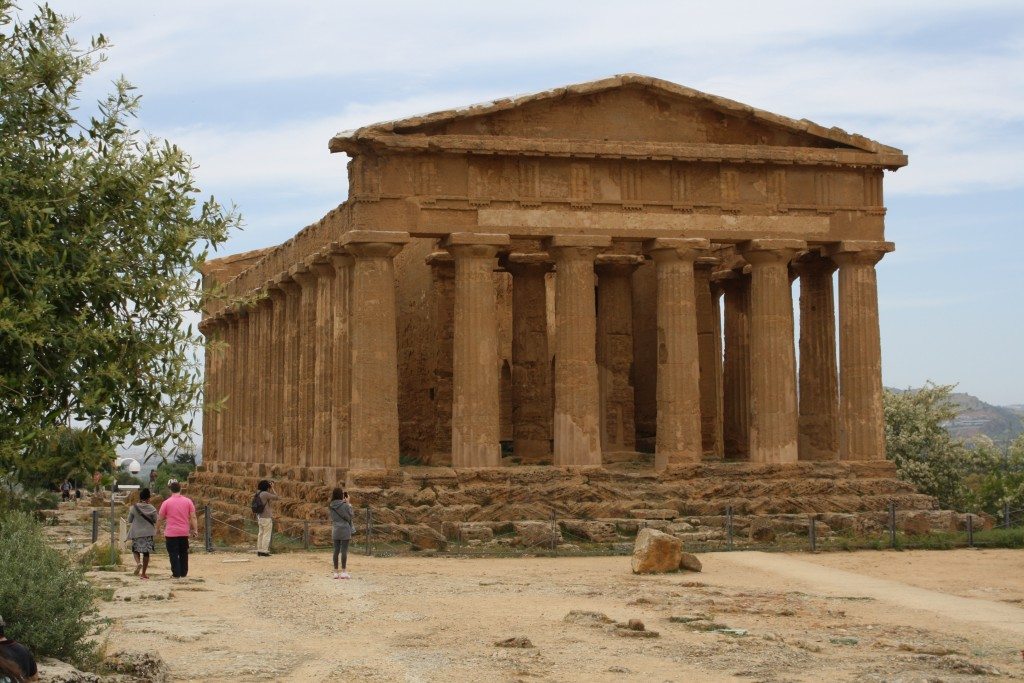
The temple of Concordia, Agrigento, Sicily. The temple, in Doric style, was constructed between 440 and 430 BCE and had 6 columns on the facade and 13 along the sides. It is one of the best preserved Greek style temples in the Mediterranean. Photo © Mark Cartwright.
The Doric order was one of the three orders of ancient Greek or classical architecture and could be identified by its smooth capital and square abacus. Also, unlike the other orders, most Doric columns stood directly on the floor of a temple without a base.
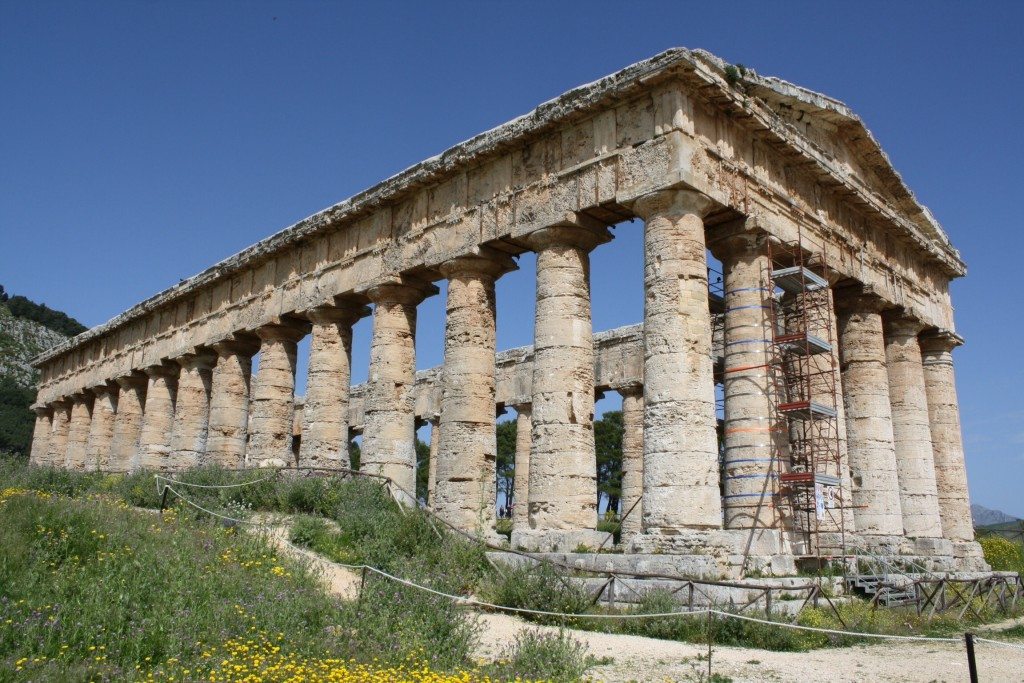
The Doric temple of Segesta, north-west Sicily. The temple was built c. 417 BCE in dedication to an unknown deity. Photo © Mark Cartwright.
Ionic order temples are easily spotted because their columns are the thinnest and smallest of the three orders. But the Ionic’s major feature is the volutes, that is the scroll shape, of its capital.
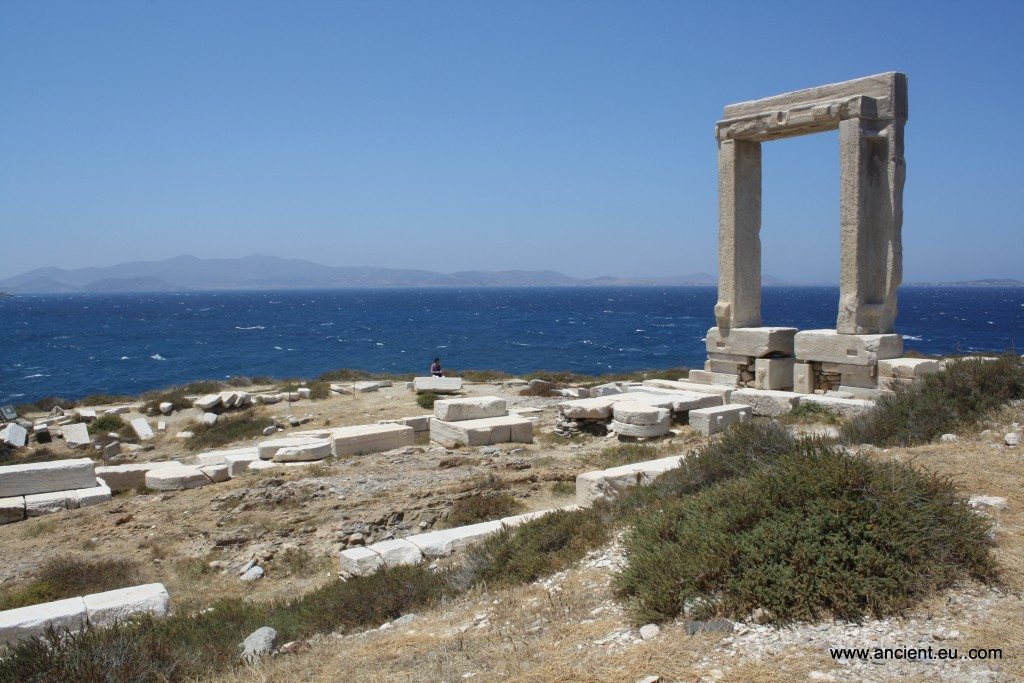
The remains of the foundations, crepidoma and doorway leading from the prodromos to the cella of the 6th century BCE temple of Apollo on Naxos in the Cyclades. The doorway is 6m high and 3.5 m wide. The temple itself, as indicated by its surviving foundations, measured some 59 by 28 metres. Photo © Mark Cartwright.
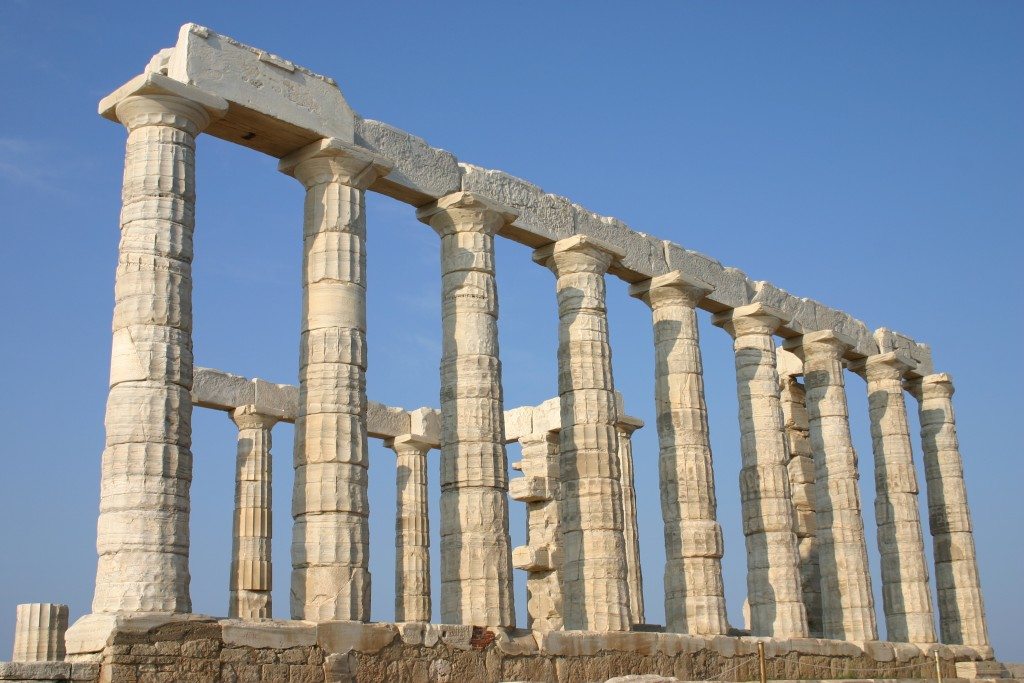
The temple of Poseidon was constructed in approx. 440 BCE, over the ruins of a temple dating from the Archaic Period. It is perched above the sea at a height of almost 70 m. The design of the temple is a typical hexastyle, i.e. it had a front portico with 6 columns. Only some columns of the Sounion temple stand today, but intact it would have closely resembled the contemporary and well-preserved temple of Hephaestus beneath the Acropolis, which may have been designed by the same architect.
As with many Greek temples, the Poseidon building was rectangular with a colonnade on all four sides. The total number of original columns was 36, of which 18 still stand today. They were made of locally-quarried white marble. They were 6.10 m (20 ft) high, with a diameter of 1 m (3.1 ft) at the base and 79 cm (31 inches) at the top. Photo © Mark Cartwright.
